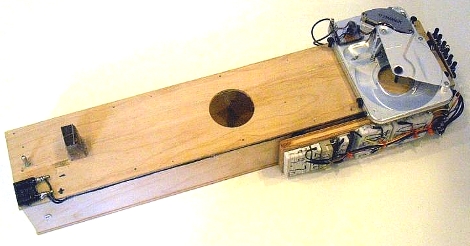
This is the multichord, a one-string musical instrument built by [Christopher Mitchell]. The string is a 20 pound mono-filament thread stretched between a wooden bridge and the read/write head of a hard drive. The idea is that the vibrations of the string are picked up and amplified acoustically by the sounding box that serves as the body of the instrument. The frequency of vibration (pitch) is changed by adjusting the tension of the string through the application of various voltages to the HDD head. A relief spring has been added to the head to take the resting tension off of it, making it a lot easier to fine-tune the settings for each note. A keyboard made of twelve buttons selects each different pitch as the string is plucked.
[Christopher] is continuing to post great hacks; we’ve seen a glove input and a giant VU meter from him in the past. Take a look at the multichord in action after the break.















